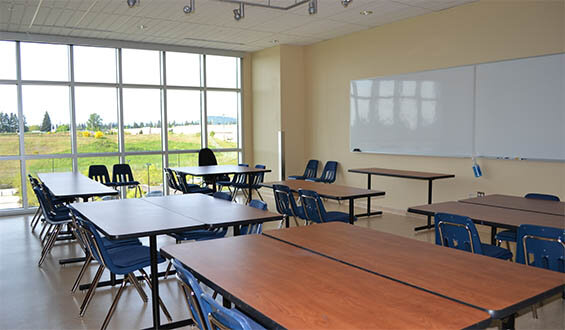
Tanner (2008) explains that exposure to natural sunlight is required to ensure that a student’s basic physiological needs are being met, which allows effective learning to take place. Although it may not commonly be realized, the need for natural sunlight is second only to the need for food and water (Tanner, 2008). Evidence of the benefits of providing for this need in an educational setting can be identified in a 1999 study that compared classrooms that were exposed to appropriate levels of sunlight to classrooms in which sunlight was lacking. Classrooms whose access to windows was limited, and in turn lacked sunlight, were stunted in their progress on both reading and math (by 26% and 20% respectively) (Heschong Mahone Group, 1999). Edwards and Torcellini’s 2002 comprehensive literature review relayed similar findings and Burke & Burke-Samide’s (2004) research does so as well. Research conducted in 1992 succeeded in dispelling the idea that plentiful window access in a classroom will distract students from activities outside. The study revealed that of all the distractions from learning, views from windows are typically the least drastic (Kuller & Lindsten, 1992). In addition to providing specific guidelines for optimal sunlight access via classroom windows, Tanner’s research also notes that light bulbs that are capable of mimicking natural light may be used as an alternative. Information on proper lighting and window sizes in a classroom is most beneficial to district school boards and the designers they contract to build schools. District school boards should be well informed about the need for natural sunlight in classrooms and the ability to gain such sunlight from larger windows. This would allow designers, who would also ideally be informed on the subject, to follow a board recommendation for larger windows (and skylights) and an overall school design that allows for all classrooms to have at least one wall of windows. This choice would provide the needed light and avoid the increased cost of employing full spectrum light bulbs. Information about the benefits of natural light on student learning would also assist teachers with the setup of their classrooms (planning to keep blinds open when possible, for example) and with planning lessons (allowing the possibility of designing lessons compatible with sitting outside during warmer weather).

Noise can affect the learning of students in a classroom environment both negatively and positively (Burke & Burke-Samide, 2004). Noise that emanates from outside the classroom (e.g., from the hallways, other classrooms due to thin walls or open doors, road traffic noise due to open classroom windows) is described as the main type of noise that negatively affects learning (Haines, 2001). This noise has been shown to distract students from the lesson at hand and to ultimately interfere with the mind’s process of retaining information (Hygge, 2003). Where noise within a classroom is concerned, there are several scenarios to be addressed. Noise within a classroom that is created by students (due to the activity at hand or disorderly conduct) has the tendency to distract and impede learning just as outside noise does (Shield and Dockrell, 2004). Though this can be corrected with the instructor’s redirection, it has been well-established that interrupting the natural flow of learning taking place in order to correct behavior significantly interferes with that learning (Woolner, 2007). Lundquist’s (2002) work describes how the acoustics of classrooms can also affect students’ learning. A room with poor acoustics can make it difficult to hear an instructor properly, whereas overactive acoustics can make it so that typical noise is brought to an atypically large decibel, distracting students. Following this, a room that is ideal in its acoustic design could assist with maintaining an optimal decibel level and contribute to the quality of learning (Burke & Burke Samide, 2004). When focusing on the ideal learning environment for an individual student, research on background noise shows that while many students prefer quiet to learn, others benefit from soothing sounds in the environment (Burke & Burke-Samide, 2004). A common example of this is students who claim they work better with the radio or television on. Information regarding appropriate noise levels for learning areas and common areas in schools would benefit school designers and school boards as well as building administrators and teachers. Designers who are tasked to create classrooms with ideal acoustics for lesson teaching would be better equipped to design school rooms. Information on sound insulation around hallways and other non-teaching common rooms would also assist designers in creating customized common areas. Given the likely increase in cost of enhancing these areas, this information would also be of use to school boards. Building administrators could make use of this information when developing policies concerning acceptable noise levels in common areas. Teachers would make most use of research about noise levels in the classroom and of research about the effect interruptions to correct excessive noise levels can have on the learning process.
Are you enjoying Part 2 of this series? If so, we encourage you to keep reading in [Part 3].
Part 2 References
Heschong Mahone Group. (1999). Day lighting in schools. Fair Oaks, CA: Author.
